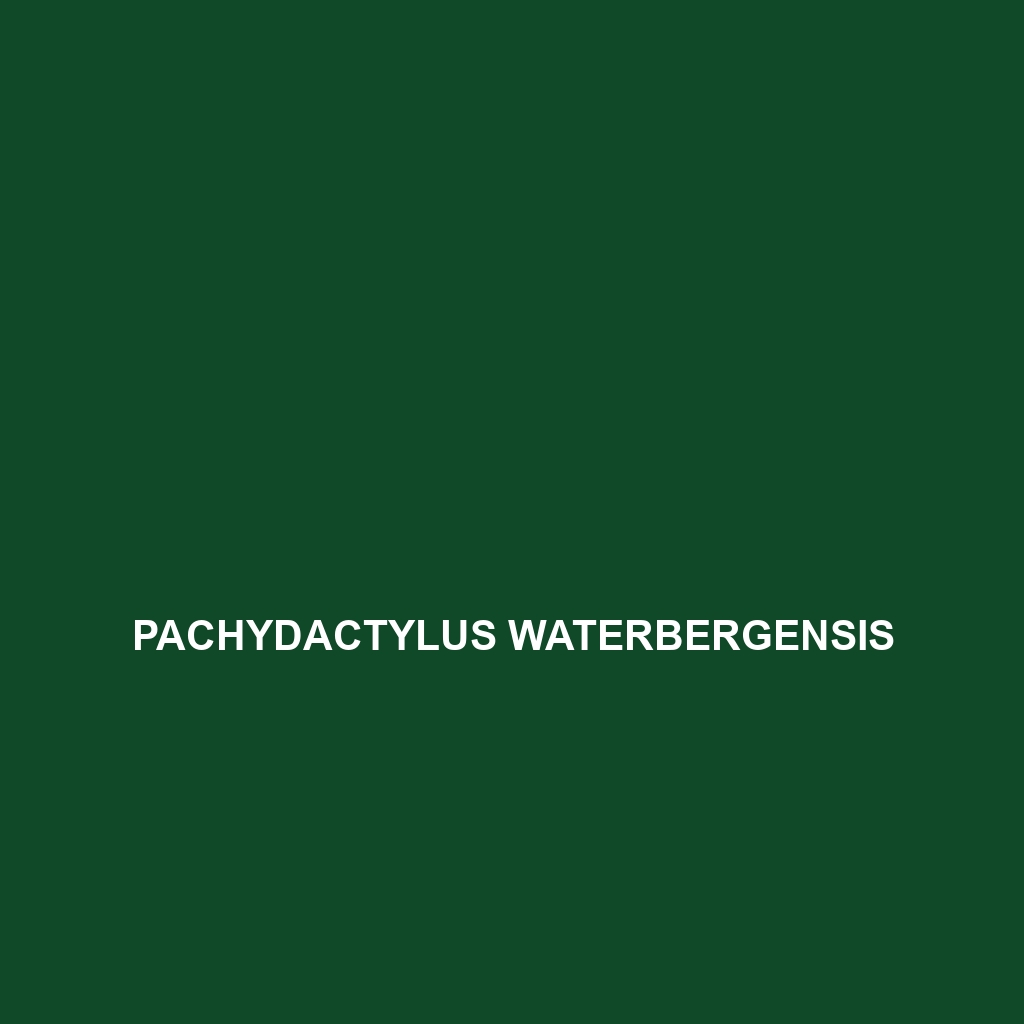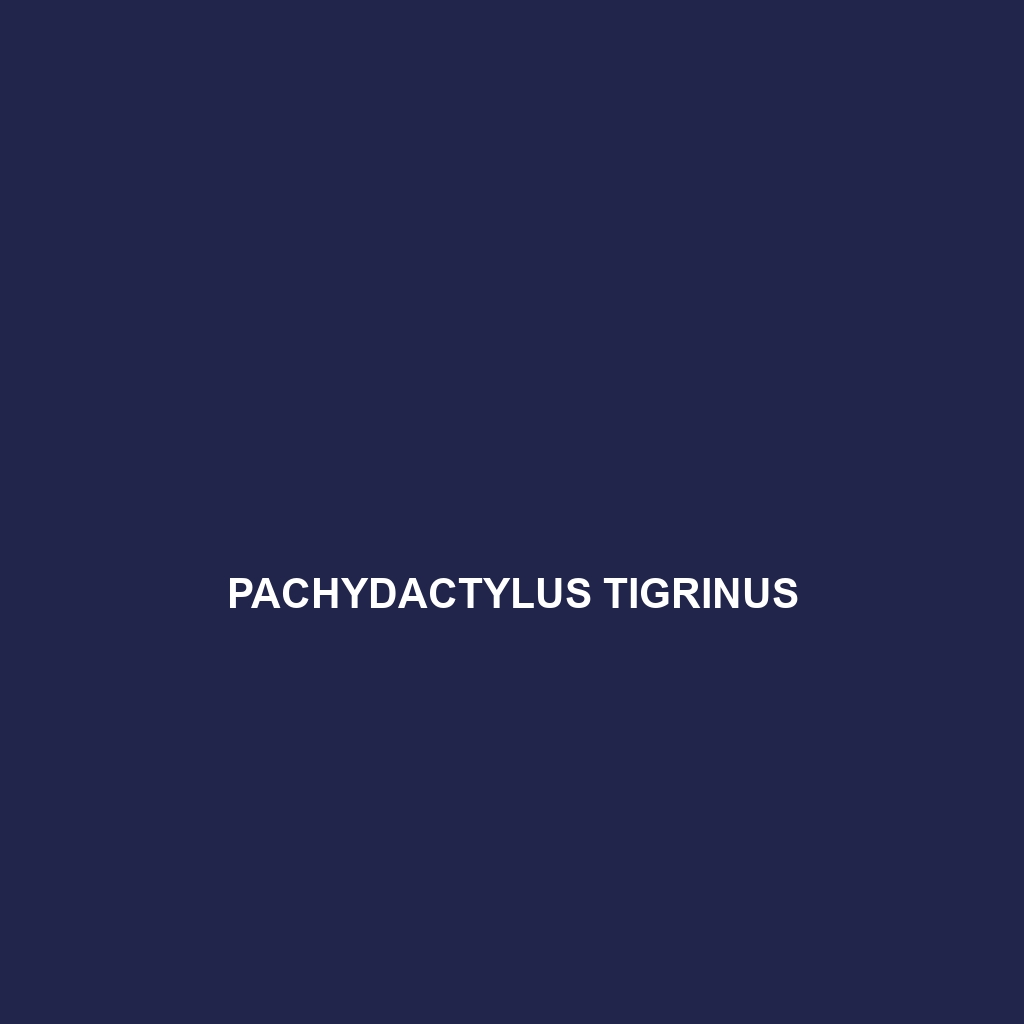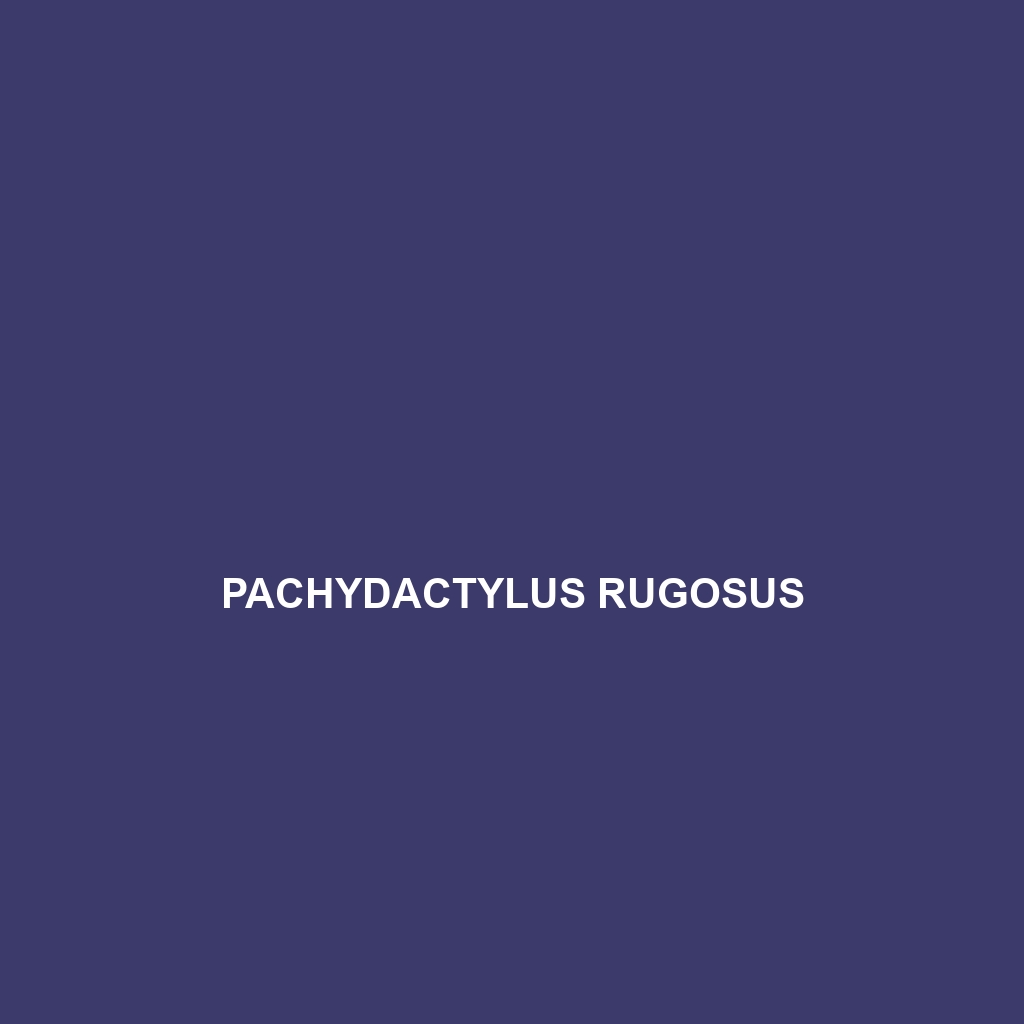<p>The <b>Pachydactylus waterbergensis</b>, or Waterberg thick-toed gecko, is a medium-sized, nocturnal species native to the rocky outcrops of the Waterberg Plateau in Namibia. Renowned for its thickened toes and unique coloration, this gecko thrives in semi-arid climates, primarily feeding on insects and playing a crucial role in its ecosystem.</p>
Tag: gecko reproduction
Pachydactylus vansoni
Discover the fascinating Pachydactylus vansoni, a slender nocturnal gecko from Southern Africa, known for its impressive climbing abilities and distinctive bulbous toe pads. Thriving in rocky outcrops and arid landscapes, this insectivorous species plays a vital role in maintaining ecological balance by controlling insect populations.
Pachydactylus tigrinus
Introducing the Pachydactylus tigrinus, or tiger gecko, a robust and vibrant reptile native to southern Africa's arid regions. Known for its striking color patterns and large clawed toes, this nocturnal insectivore plays a crucial role in maintaining ecosystem balance by controlling insect populations.
Pachydactylus serval
<p><b>Pachydactylus serval</b>, commonly known as the serval gecko, is a nocturnal insectivore native to the diverse ecosystems of southern Africa, thriving in savannas, scrub forests, and thorny woodlands. With robust bodies, unique tuberculate scales, and a remarkable ability to camouflage, this gecko plays a vital role in controlling insect populations and maintaining ecological balance.</p>
Pachydactylus scutatus
<p>The <b>Pachydactylus scutatus</b>, or shield-toed gecko, thrives in the arid landscapes of southern Africa, displaying a unique camouflage with earthy brown and yellow patterns. This nocturnal insectivore measures 8 to 12 cm, featuring broad toes for climbing, excellent night vision, and a remarkable ability to regenerate its tail, playing a vital role in controlling insect populations within its ecosystem.</p>
Pachydactylus rugosus
<p><b>Pachydactylus rugosus</b>, known as the rough-toed gecko, thrives in semi-arid regions of southern Africa, showcasing distinctive physical traits like robust bodies and enlarged toe pads. This insectivorous, nocturnal species plays a vital role in its ecosystem by controlling insect populations and serving as prey for larger animals.</p>
Pachydactylus rangei
Discover the resilient Pachydactylus rangei, or Namibian gecko, known for its unique adaptations to the arid environments of the Namib Desert. With a distinctive sandy brown coloration and broad, flattened toes, this primarily nocturnal insectivore plays a vital role in its ecosystem by controlling insect populations while serving as prey for larger predators.
Pachydactylus parascutatus
<p>The <b>Pachydactylus parascutatus</b>, or Namibian Thick-toed Gecko, is a medium-sized, nocturnal insectivore found in the rocky outcrops of Namibia and Botswana, known for its distinctive broad head, flared toes, and remarkable adaptation to arid habitats. With a robust body and unique color patterns, this species plays a vital role in controlling insect populations and indicates the health of its ecosystem.</p>
Pachydactylus punctatus
<p><b>Pachydactylus punctatus</b>, also known as the spotted thick-toed gecko, is a robust, nocturnal reptile found in the arid regions of southern Africa, characterized by its sandy beige to light brown coloration with dark spots. These geckos are insectivorous, play a vital role in their ecosystem by controlling insect populations, and thrive in diverse habitats like savannas and scrublands.</p>
Pachydactylus oshaughnessyi
<p><b>Pachydactylus oshaughnessyi</b> is a medium-sized gecko native to southern Africa, characterized by its elongated, flattened body and large, bulbous toes for excellent grip on rocky terrains. This nocturnal insectivore exhibits distinct earthy coloration for camouflage and plays a crucial role in regulating insect populations within its ecosystem.</p>







